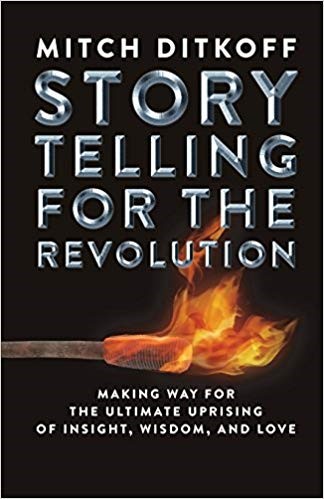Unity Takes Two
Mitch Ditkoff and I have an interesting mercurial chemistry when we get together.
Certain things get completed when we riff and improvise. He and I, and the rest of the Idea Champions crew, have all been talking about what creates a culture of innovation for a few years now. Often, all it takes is two people who have what I call "creative resonance."
Show me any two people who can agree and disagree with equal enthusiasm and respect and I'll show you a duo who can brainstorm persistently at high heat.
A great new series on Creative Pairs at Slate talks eloquently about the dynamic balance and high energy the right two people can create when they "complete" each other.
As a successful professional songwriter, I grew up loving the songs of John Lennon and Paul McCartney, Mick Jagger and Keith Richards, and older teams like Rogers and Hammerstein, the Gershwin brothers, and Lerner and Lowe. It makes perfect sense to a songwriter that creative pairs would launch some of the most successful companies of the last 35 years.
The creative boom in digital technology started in the early 70's with Bill Gates and Paul Allen, Steve Jobs and Steve Wozniak, and continued a generation later when Larry Page and Sergey Brin created Google.
Great duos exist in every vocational and artistic field: Watson and Crick, Gilbert and Sullivan, Engels and Marx.
Two centuries ago, breakthrough composers often arrived in pairs, pacing each other even when they weren't working as teams: piano innovators Chopin and Schumann (both born 1810), opera titans Wagner and Verdi (both born 1813).
Creative pair chemistry ignites when two people spontaneously strike a agreement to both compete and collaborate with each other simultaneously. That tension between collaboration and competition is more easily achieved and managed in pair relationships than any other kind of team configuration.
Joshua Wolf Shenk's Creative Pairs series is now in its third installment at Slate. Part 1 of Inside the Lennon/McCartney Connection starts here and continues on to Part 2.
If you really want to see how simple the crucible of creativity can be, be sure to keep following Shenk's series. You'll think differently about that colleague you argue with all the time.
One little tweak, a mutual change in attitude and mindset, and something magical could happen.
-- Tim Moore
Post a comment
Thanks for signing in, . Now you can comment. (sign out)
(If you haven't left a comment here before, you may need to be approved by the site owner before your comment will appear. Until then, it won't appear on the entry. Thanks for waiting.)














